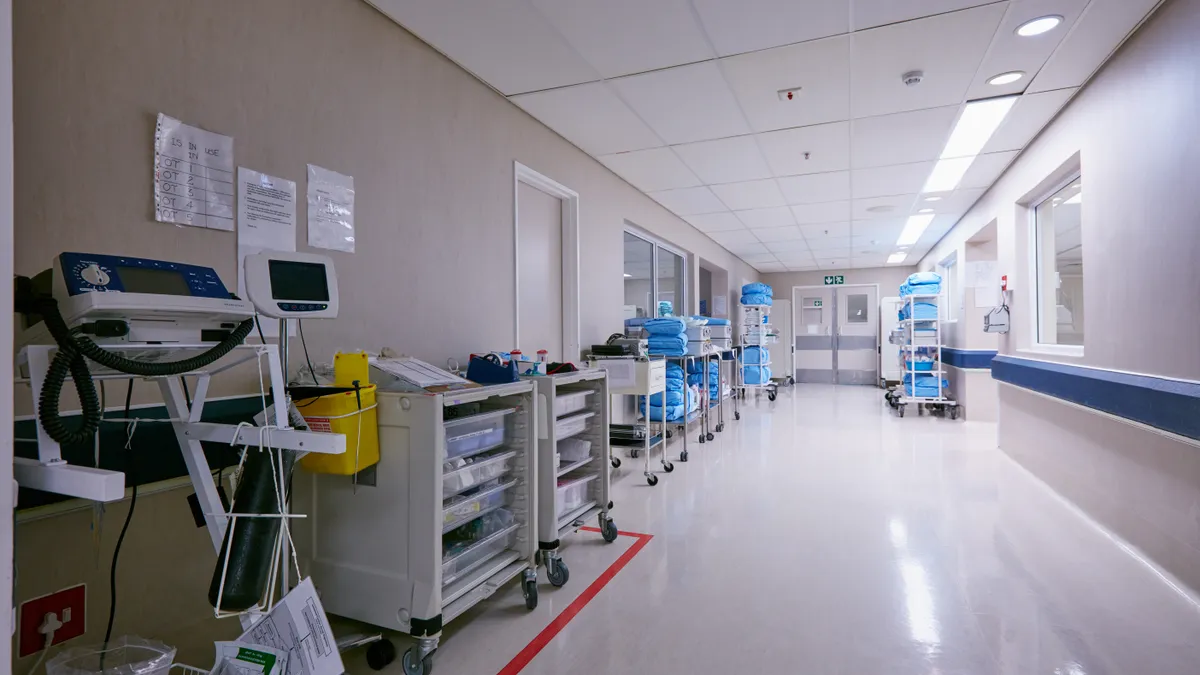Dive Brief:
- Hospitals in the U.S. are spending $25 billion more each year on supply chain operations than is needed, according to a study from Navigant. The figure is a 10% increase over excess costs recorded 2017.
- The study estimates hospitals could reduce supply expenses by 17.7% each year by improving supply chain processes and product utilization.
- Navigant suggests enhanced collaboration with suppliers and the use of data analytics to improve efficiencies.
Dive Insight:
At my college, I teach nurses in our graduate nursing programs the first business course they have ever taken. My course focuses on operations and finance, with a healthy dose of supply chain management thrown in.
This is a non-clinical course. And while we may use the medical industry as our lens, I cover everything from the Toyota Production System to vendor-managed inventory to project management to workarounds on the production floor ... I mean the emergency department or the "med-surg" floor.
The students I work with are typically experienced nurses with lots of time in hospitals and medical centers. They know what works and what doesn’t. While they often question why clinicians need to take a business course, they quickly realize that they indeed work for a business — and a complicated one at that.
We chat about missing or broken equipment, lack of supplies at the bedside, poor patient handoffs between shifts, staffing challenges, inefficient layout, poor communications between departments, management issues, patient satisfaction ratings and risk. I draw many parallels to other types of businesses as a way to show them that they are not alone in the challenges they face.
Yet their stakes are higher. A missing part at the snow blower factory may slow down the line or aggravate a customer. At the bedside, or in the operating room, that lack of product has much higher consequences.
By the end of the term, many of my students have recommended changes to their supervisors about improvements in inventory management, communication, layout and equipment deployment.
As a supply chain person at heart, I focus on that discipline in my class, through assignments as well as discussion. While we don’t spend a lot of time on missed cost savings opportunities, we do agree on the importance of a highly functioning supply chain and its impact on hospital operations and patient outcomes.
I’ve taught hundreds of nurses over the years, hopefully supply chain advocates all. If hospitals get serious about improvements in the supply chain, they will find willing participants who understand the challenges.














